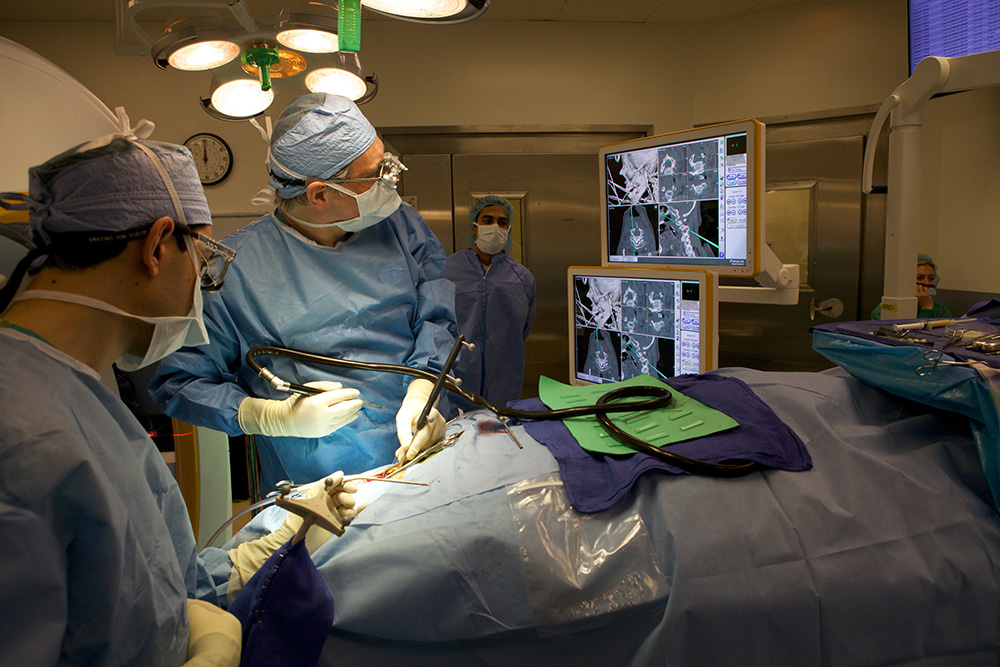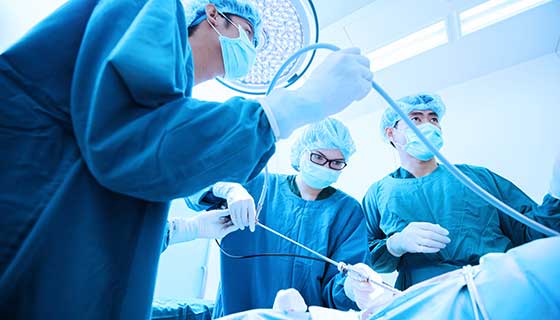The Importance of Follow-Up Care with the Best Spine Surgeons in St Louis MO
The Importance of Follow-Up Care with the Best Spine Surgeons in St Louis MO
Blog Article
An Overview of Spinal Column Problems That Usually Cause Surgical Therapies
When conservative therapies fail to ease relentless signs and symptoms,Back conditions such as herniated discs, spinal stenosis, and degenerative disc disease frequently necessitate surgical treatments. These problems not just lead to significant discomfort however can likewise severely impair daily functioning and overall lifestyle. Comprehending the nuances of each condition and the matching surgical choices, such as discectomy or spinal blend, is essential for reliable monitoring. As we explore these problems better, it ends up being apparent that the decision-making procedure surrounding medical therapy is multifaceted and warrants mindful factor to consider.
Herniated Discs
Although many individuals with herniated discs might find relief with traditional treatments, surgery ends up being a needed consideration when signs linger or aggravate - best spine surgeons in st louis mo. A herniated disc takes place when the soft inner gel of a back disc sticks out through its outer layer, potentially leading and pressing nearby nerves to pain, tingling, or weak point in the extremities
Traditional monitoring usually consists of physical therapy, discomfort medications, and corticosteroid injections, which aim to reduce swelling and enhance feature. In cases where these approaches stop working to reduce debilitating signs, surgical choices may be explored.
The most common procedure for herniated discs is a discectomy, which involves the removal of the herniated part of the disc to soothe stress on the impacted nerve root. In extra severe cases, back blend may be necessary to maintain the influenced vertebrae.
People are suggested to discuss the possible threats and benefits of surgery with their health care copyright to make an informed choice. Eventually, the objective of any kind of surgical intervention is to bring back function, alleviate pain, and enhance general quality of life for people enduring from herniated discs.
Back Stenosis
Spine stenosis takes place when the areas within the spinal column narrow, causing increased stress on the spine and nerves. This problem can establish in different areas of the spine, consisting of the cervical and lumbar areas, frequently as a result of age-related changes, such as degenerative disc disease, joint inflammation, or thickening of ligaments.
People with spinal constriction might offer with signs and symptoms that include pain, feeling numb, tingling, or weakness, primarily in the arms or legs. These signs can be exacerbated by tasks that entail standing or walking, usually leading individuals to seek alleviation through conservative therapies like physical treatment, medicines, or epidural steroid shots.
Nonetheless, when these non-surgical treatments fail to supply ample relief, medical alternatives may be considered. Common procedures for back constriction consist of laminectomy, which entails the removal of part of the vertebra to reduce stress, and spinal fusion, which stabilizes the damaged area. The choice to go after surgery is normally based on the intensity of signs, the level of useful impairment, and the general health of the client. Motivate diagnosis and monitoring are crucial to avoid further neurological concession and boost lifestyle.
Spondylolisthesis
Spondylolisthesis occurs when one vertebra slips ahead over one more, leading to imbalance of the spinal column. This problem can result from numerous variables, including congenital issues, trauma, or degenerative modifications in the spine. It is most frequently observed in the lumbar area, especially at the L4-L5 and L5-S1 degrees.

When non-surgical strategies fall short to ease signs or when considerable nerve compression is present, medical treatment might be called for. Surgical options can include spinal fusion or decompression procedures, intended at bring back positioning and reducing neurological symptoms.
Degenerative Disc Condition

Patients with DDD typically experience pain that may radiate to the legs or arms, relying on the affected area of the back. The condition can be detected via a mix of clinical evaluation, imaging research studies, and patient background. Therapy options normally start with conservative actions, including physical treatment, discomfort monitoring, and lifestyle adjustments. Nevertheless, when these strategies fall short to offer adequate alleviation, medical treatments may be taken into consideration.
Surgical choices for DDD may include back blend or synthetic disc replacement, focused on stabilizing the affected segment and easing discomfort (best spine surgeons in st louis mo). Inevitably, the option of treatment is embellished, taking right into account the extent of the problem, patient health, and way of life factors
Back Lumps

What elements add to the growth of tumors within the spine, and just how do they manifest in patients? Back lumps can occur from different variables, consisting of genetic proneness, environmental impacts, and pre-existing clinical conditions. They can be classified as primary lumps, originating in the spine, or secondary tumors, which spread out from other areas of the body. People might offer with a series of symptoms, including localized discomfort, neurological deficiencies, weak point, or changes in bowel and bladder feature, depending upon the growth's dimension and place.
Medical diagnosis usually includes imaging studies such image source as MRI or CT checks, which aid mark the tumor's qualities and influence on surrounding frameworks. In assessing treatment choices, the growth's kind, area, and grade are vital factors to consider. Surgical treatment might be called for to minimize signs, get a biopsy, or eliminate the tumor totally. The objective of surgical procedure is frequently to unwind neural components and stabilize the spine. Adjuvant therapies, including radiation or radiation treatment, might likewise be essential depending on the growth's nature. Early detection and treatment are essential for optimizing results in people with back growths.
Verdict
In recap, back problems such as herniated discs, spine stenosis, spondylolisthesis, degenerative disc illness, and back lumps regularly require surgical treatment due to their possible to trigger significant discomfort and practical disability. While conservative therapies may use momentary alleviation, medical options become crucial when symptoms continue or worsen. Timely diagnosis and treatment play a crucial function in recovering function and enhancing the quality of life for affected people, emphasizing the significance of comprehensive back care.

Report this page